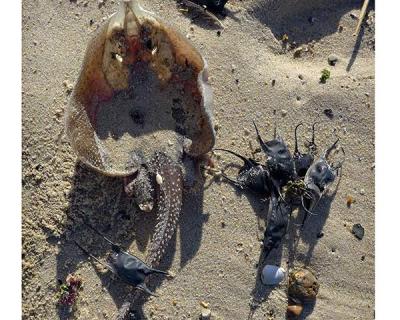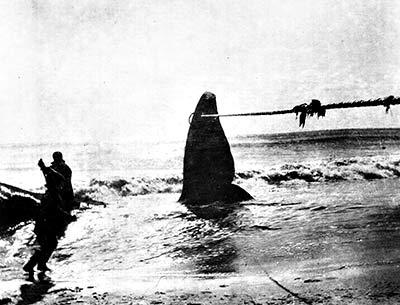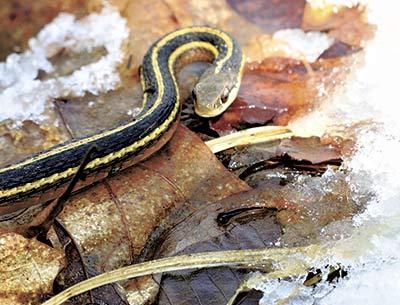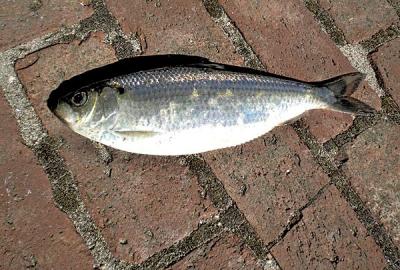Mermaid Purses’ Treasures
Mermaid Purses’ Treasures

Let’s face it, if skates, with their bat wings and rat tails, flew in the sky instead of along the bottom of the sea, we’d run inside like cave people fleeing pterodactyls and wait for them to pass.
I’ve always had a fascination with them, however, and it returns about this time of year because in early spring you can find fresh mermaid purses washed up in the wrack line. They are usually larger and olive green in color because the purse’s leathery skin has not yet dried black and shrunken in the air.
On Monday — the day of the skate as it turned out — nice little waves were peeling in front of the short jetty at Ditch Plain so I grabbed my board and paddled out. On the way into the water I passed the wrack line and spied a fresh mermaid purse. It got me thinking.
For those who see them in their dried state — black, rectangular, with what look like two legs on each end — but don’t know what they are, mermaid purses are skate egg cases. When my daughter was young, we would hunt the wrack line with a pail of seawater in search of fresh ones. When one was found, we’d open the seam on one end of the purse and drop the baby skate into the pail and watch it flap its tiny wings. Then we’d release it into the surf.
When I was a kid, my friends and I would collect the dried purses, stick their legs in the sand in formation as though they were soldiers and throw firecrackers at each other’s armies. Boys will be boys.
Younger still, I was obsessed with Aztecs, their obsidian bladed knives and war clubs, and their feathered serpent Quetzalcoatl, which I imagined the dried mermaid purses to be. I found that the purses made terrific sacrifices when placed on a pyre of sticks and lighted. Aztecs will be Aztecs.
After my surf session, Kyle and I went on a mission to the North Fork to buy plants and to visit a vineyard or two. This is a terrific time for South Forkers to take the Shelter Island ferries to Greenport. The ferry travelers are mostly local this time of year. Why else would the ticket taker say in answer to my asking if he thought a storm was brewing: “Maybe this afternoon. We might have to take a reef in the mainsail.” I liked the cut of his jib.
We landed in Greenport having had no breakfast. Where to eat? Why not Claudio’s, Greenport’s smaller but no less venerable answer to Montauk’s Gosman’s? It’s a salty place right on the water across the street from Preston’s chandlery.
Again, this is the right time to hit Claudio’s. It gets touristy in summer, but now one has the chance to admire its world-class bar. A fine collection of framed photos of old J-class yachts hang on the walls. Greenport was home to the mostly-Norwegian crews of those spectacular sailboats back in the ’20s.
Before ordering, I toured the old photos en route to the men’s room, wherein the subjects of a mural painted in vivid pastel shades were mermaids, some swimming, others lounging prettily on rocks. I sensed a theme.
Back at our table, our server took our drink order. She was an older woman and extremely friendly. As she handed us menus she strongly suggested we try the day’s special, skate wings served in a caper-butter sauce. Now, you don’t often see skate wings on menus, even fishy East End menus.
Our server told us how she was offered a taste of skate a year or so ago. The very thought of it at the time caused her to screw up her mouth and wrinkle her nose in a way she displayed. “I catch skates when we go fishing for fluke and porgy off Gardiner’s Island in summer. Eeeee, the way they twist around on your line when you catch ’em.” There was that face again.
But then she said she threw caution to the wind and took a taste. Her eyes widened. A broad smile revealed the happy ending. I happen to love skate wings. Sometimes I’ll get a pair of wings as a gift from a fisherman friend, or keep the bigger skates I catch. They’re easy to prepare. You simply cut the wings from the skates, and using a sharp fillet knife, slice the flesh from the wings’ cartilaginous skeleton. The meat is tightly ribbed, like the skeleton. It has no bones, and the wing meat cooks up white and tender. I ordered the special. It was delicious.
Our server stopped at our table on her rounds and we talked skates. I told her we fished the same waters around Gardiner’s Island, midway between Greenport and Montauk, during the summer. We vowed never again to throw back a skate with wings large enough to eat.
One question remains: Why “mermaid purses”? At first glance the bottom feeders look more like brown, prehistoric bats with sandpaper skin, spines, and shark-like eyes on their dorsal side. But turn them over. Their underside is virginal white, smooth, like the skin of the mermaids in Claudio’s men’s room, with only a pretty little mouth that wears a sweet, perpetual smile.
Best to dress your skates with their scary side up. It’s hard to cut the wings off a mermaid who’s smiling at you.



